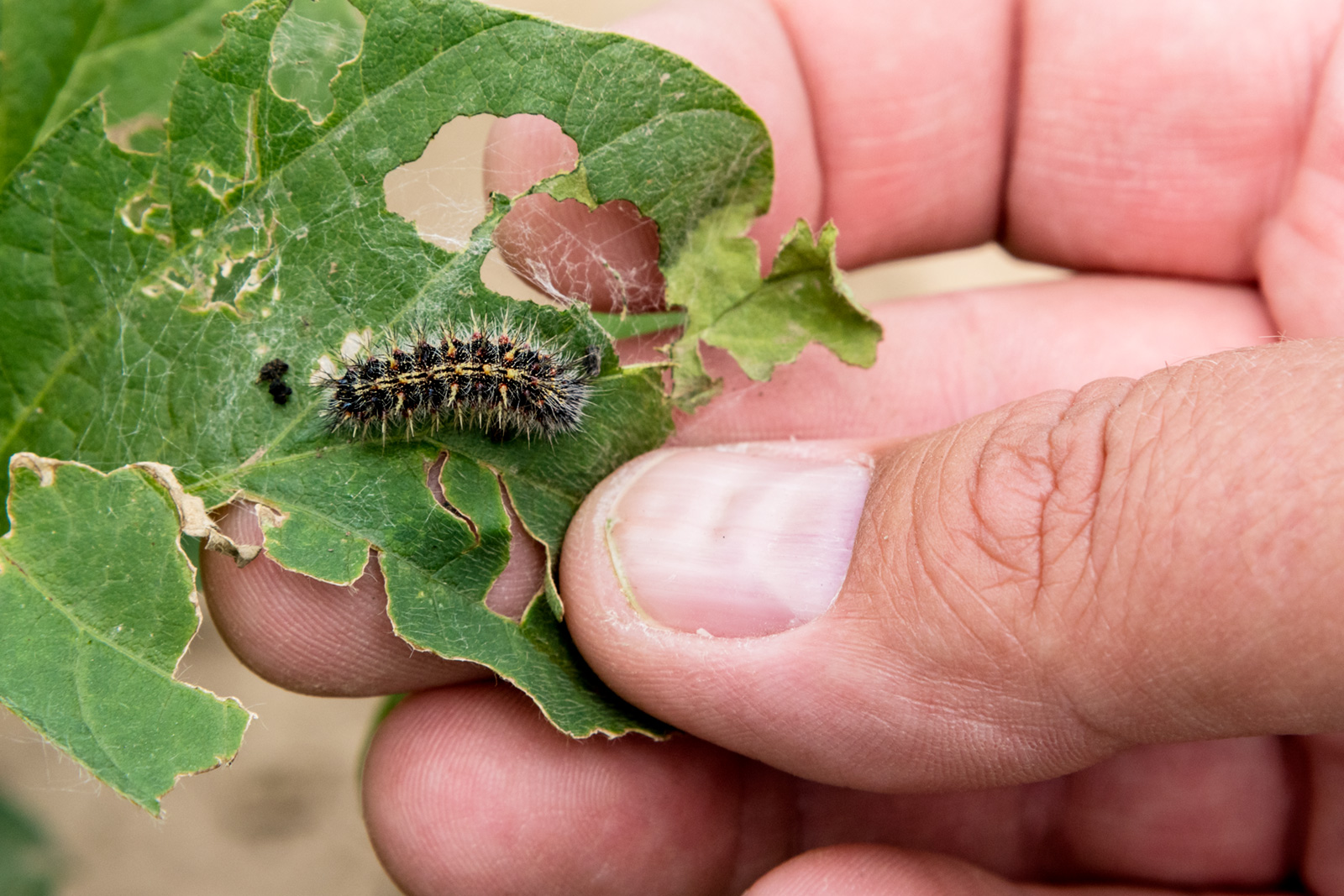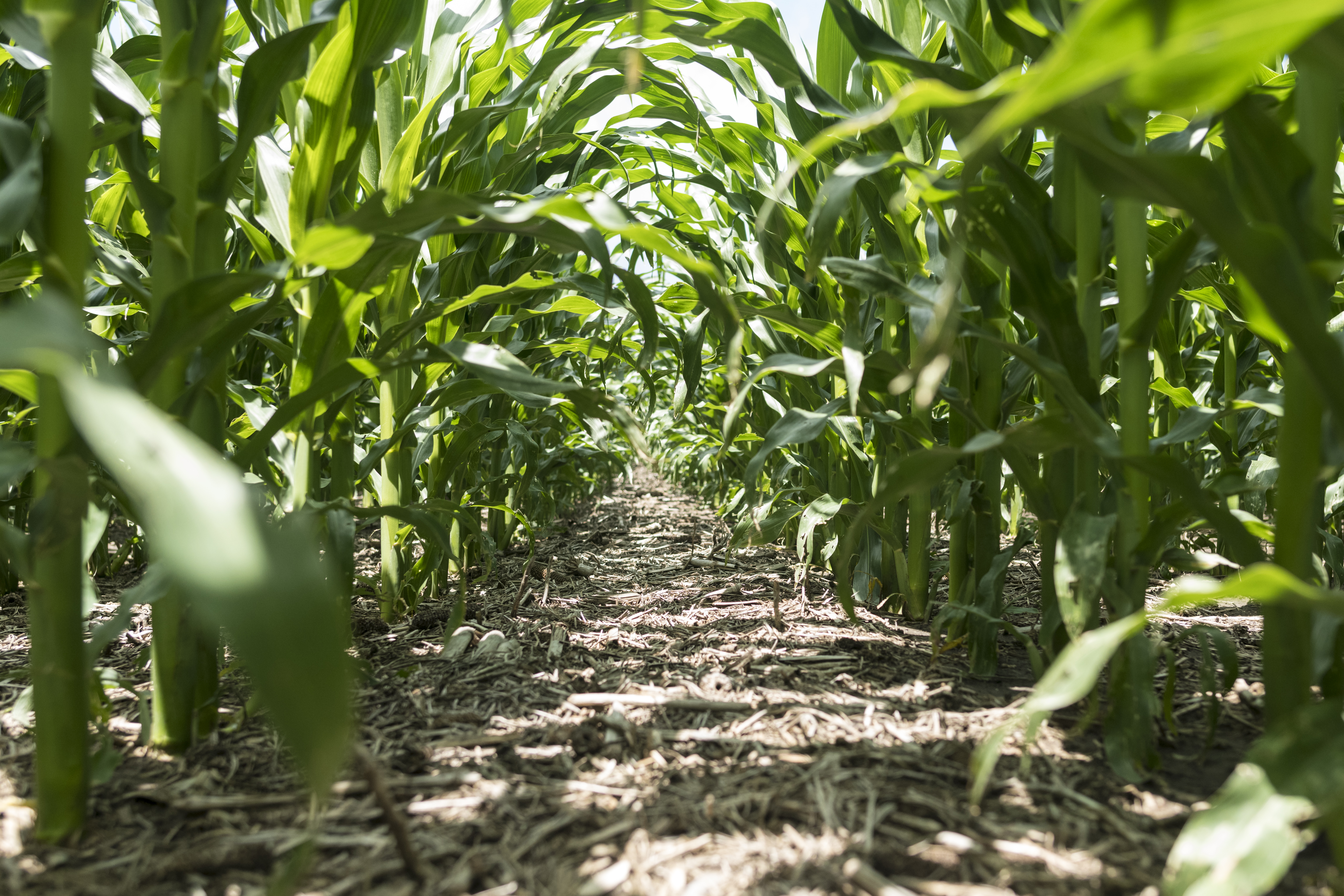Thistle caterpillars are the larval stage of the painted lady butterfly, and were a very big deal in Nebraska soybean fields in 2019. Fast forward to June 2020, and thistle caterpillars are starting to appear in soybean fields again, but it is too early to tell if thistle caterpillars will be as significant of a pest as last year.
Painted lady butterflies migrate from the southern United States and Mexico in late May and June, and do not overwinter in Nebraska. Butterflies arrived in area fields two weeks ago, and we are starting to get a few reports of very small thistle caterpillars feeding in soybeans. Thistle caterpillars are brown to black in color and have hairs that look like small spikes along their bodies. Thistle caterpillars will feed on a wide variety of host crops, but commonly found in Nebraska soybean fields, rolling the soybean leaf over themselves as the feed, eventually webbing the leaf into a ball. The caterpillars will feed for two to three weeks before pupating. Butterflies will emerge seven to fourteen days later and begin to lay eggs individually on soybean leaves. Nebraska will usually experience two generations per year, with the second moth flight in late July and larval feeding in late July and early August. Butterflies will migrate south in September.
In 2019, the first moth flight lasted over several weeks, which meant egg hatching took place over the month of June and early July, and it was common to see freshly hatched caterpillars in the same field as very large caterpillars and pupas. This extended feeding cycle caused a lot of leaf defoliation and fields requiring treatment.
In most years, treatment for thistle caterpillars specifically is often not required. At this moment, we recommend routine scouting for thistle caterpillars along with other early season soybean pests including bean leaf beetles and Japanese beetles. In vegetative growth stages of soybeans, treatment is recommended when leaf defoliation reaches thirty percent and caterpillars are present and actively feeding. In reproductive stages of soybeans, treatment should be considered if caterpillars are present, feeding, and 20% defoliation is likely if left untreated.



